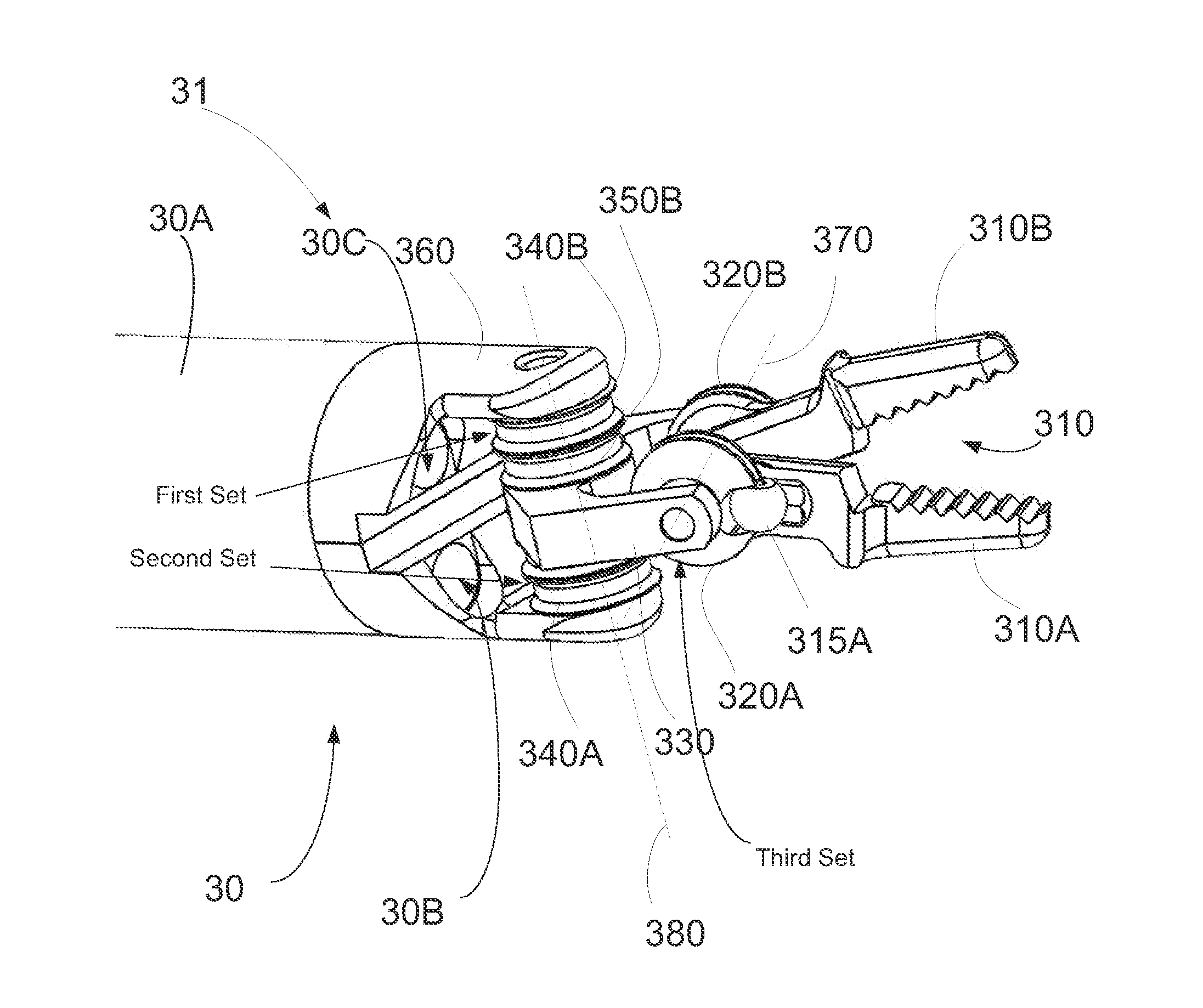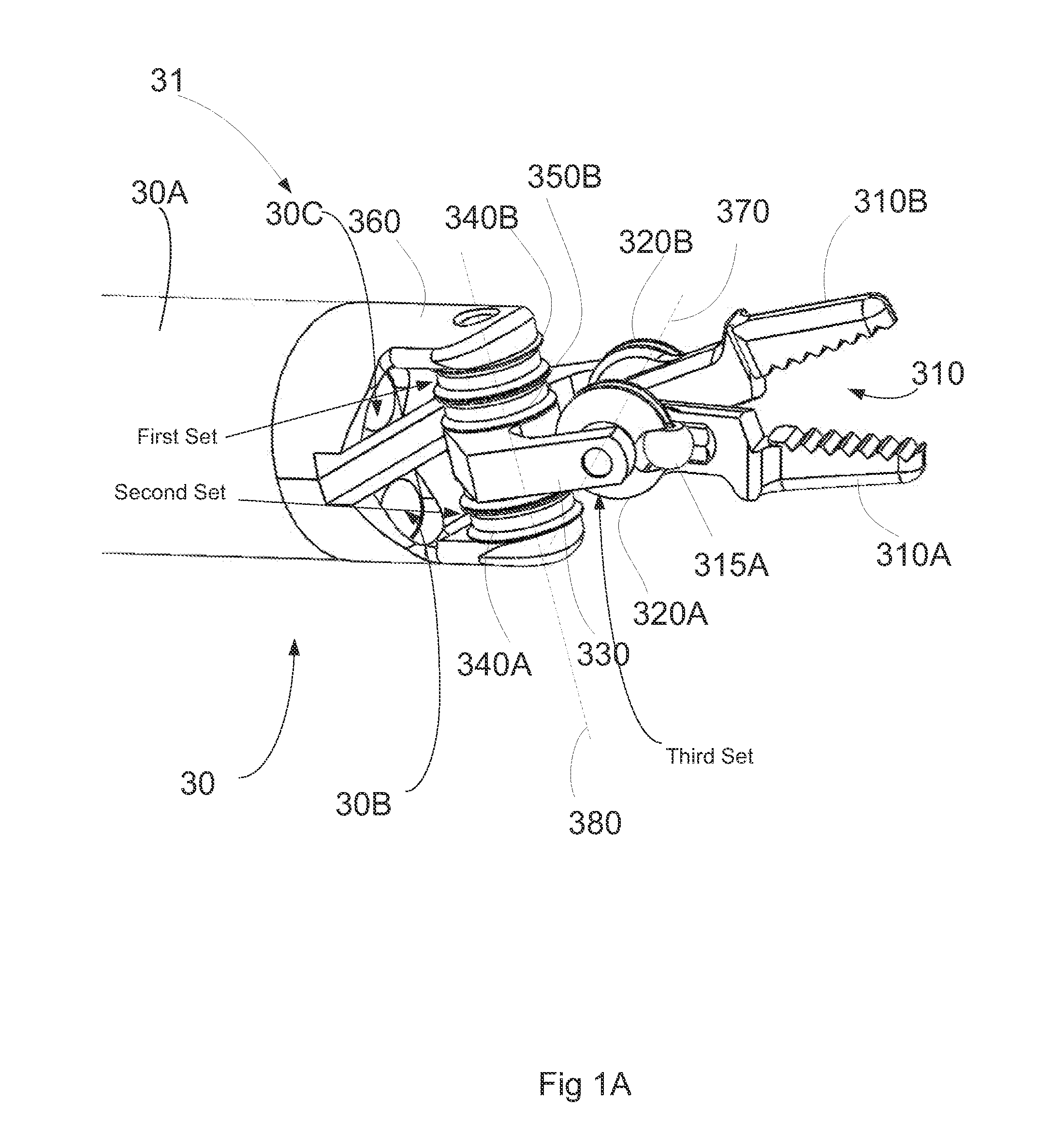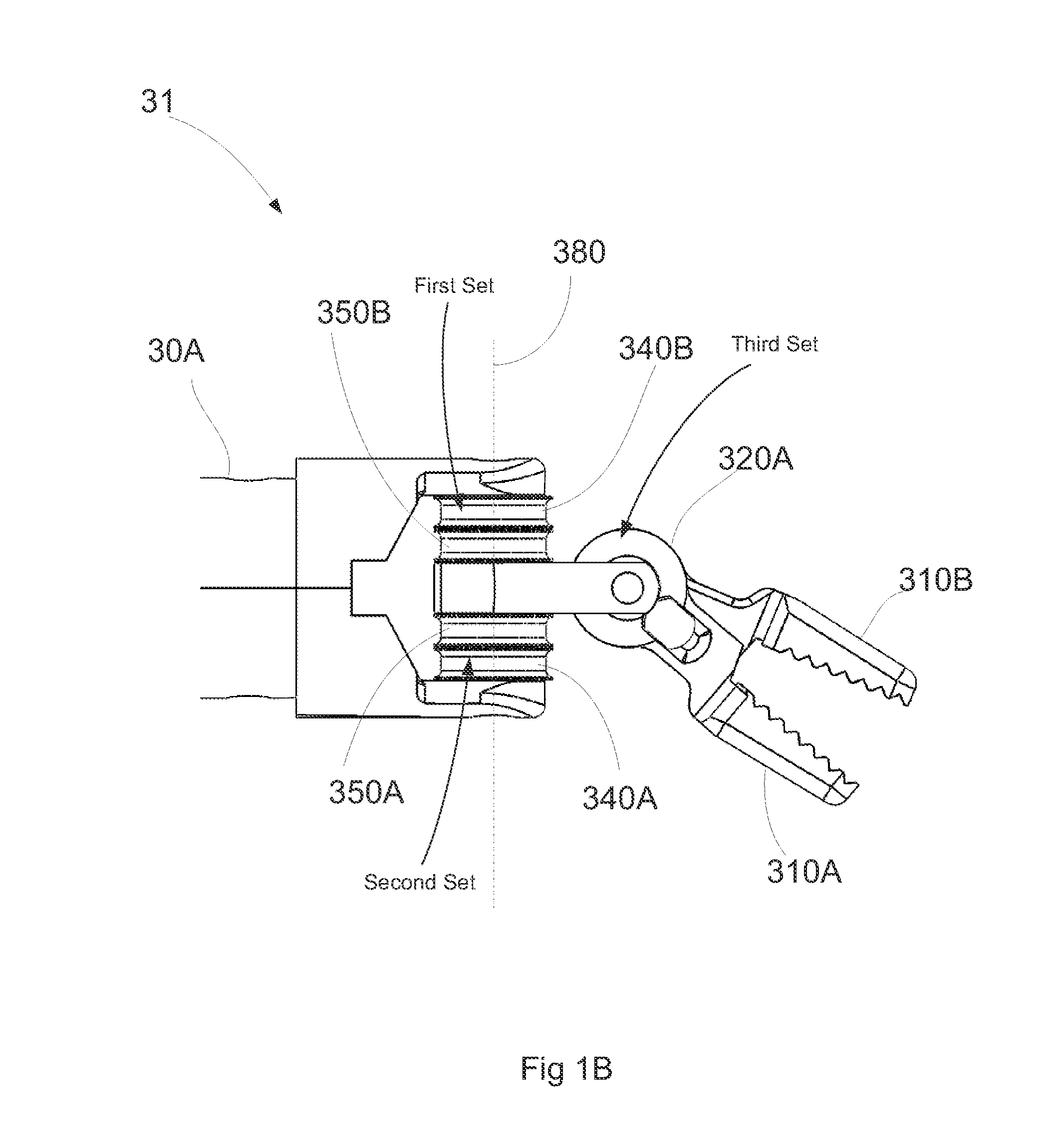Compact robotic wrist
a robotic wrist and compact technology, applied in the field of robotic tools and end effectors, can solve the problems of insufficient straight rigid tools
- Summary
- Abstract
- Description
- Claims
- Application Information
AI Technical Summary
Benefits of technology
Problems solved by technology
Method used
Image
Examples
Embodiment Construction
[0088]Described below are embodiments of tools, such as surgical tools, that have various advantages over on-market tools. At least some of the embodiments of tools described herein advantageously provide for less occlusion of the worksite, thereby allowing the operator improved visualization of the worksite. At least some of the embodiments of tools described herein provide for enhanced ability (e.g., of an operator of the tool, of a surgeon operating a tool) to perform complex operations by, for example, reducing the diameter of the wrist of the tool. At least some embodiments of tools describe herein provide enhanced ability to work in areas where access is limited (e.g., a smaller workspace), which can be made possible at least in part by a reduction in the diameter of the wrist of the tool.
[0089]In some embodiments disclosed below, a tool can include an end effector coupled to a tool shaft via a wrist, where the wrist allows for multi-axial motion (e.g., movement in pitch and y...
PUM
 Login to View More
Login to View More Abstract
Description
Claims
Application Information
 Login to View More
Login to View More - R&D
- Intellectual Property
- Life Sciences
- Materials
- Tech Scout
- Unparalleled Data Quality
- Higher Quality Content
- 60% Fewer Hallucinations
Browse by: Latest US Patents, China's latest patents, Technical Efficacy Thesaurus, Application Domain, Technology Topic, Popular Technical Reports.
© 2025 PatSnap. All rights reserved.Legal|Privacy policy|Modern Slavery Act Transparency Statement|Sitemap|About US| Contact US: help@patsnap.com



